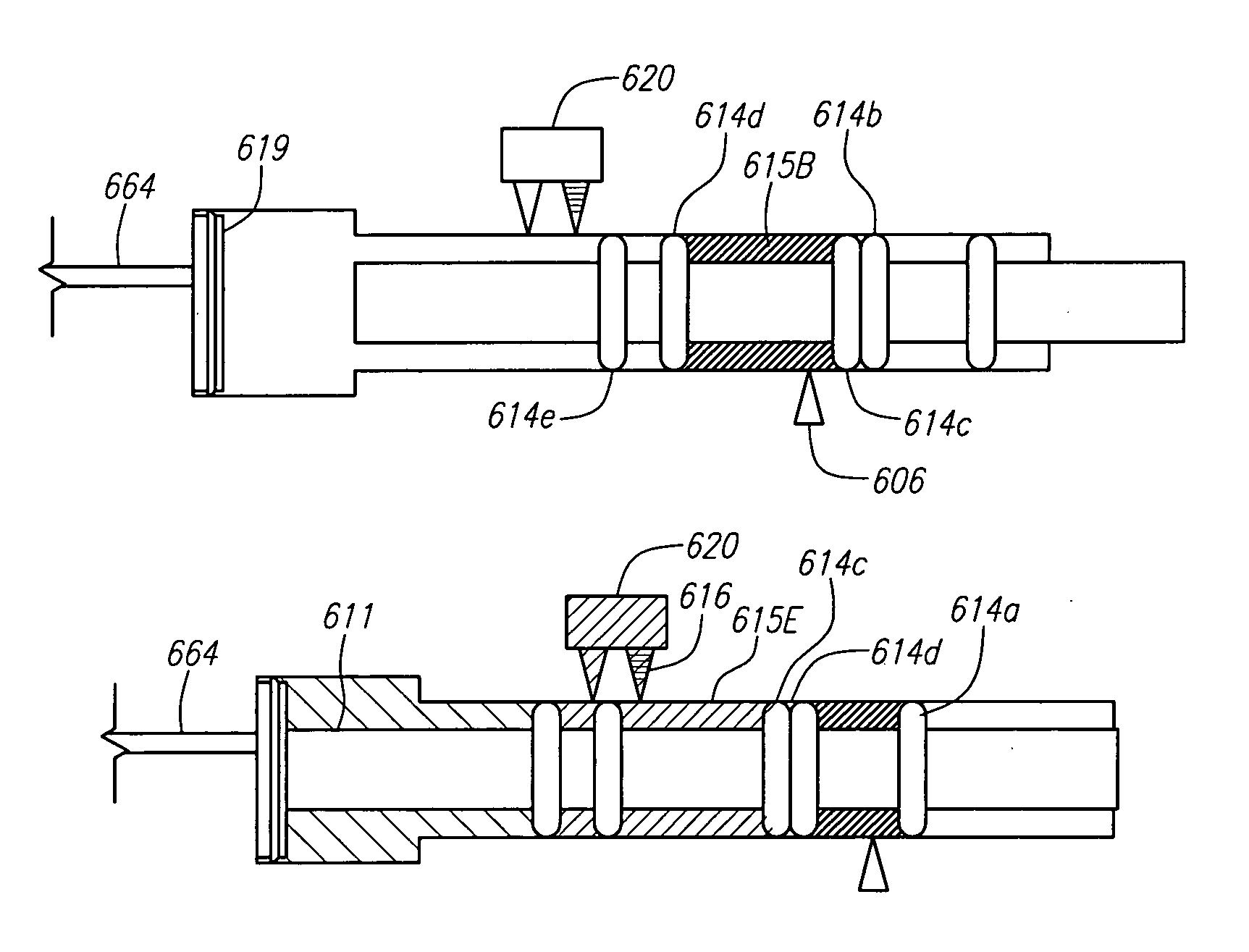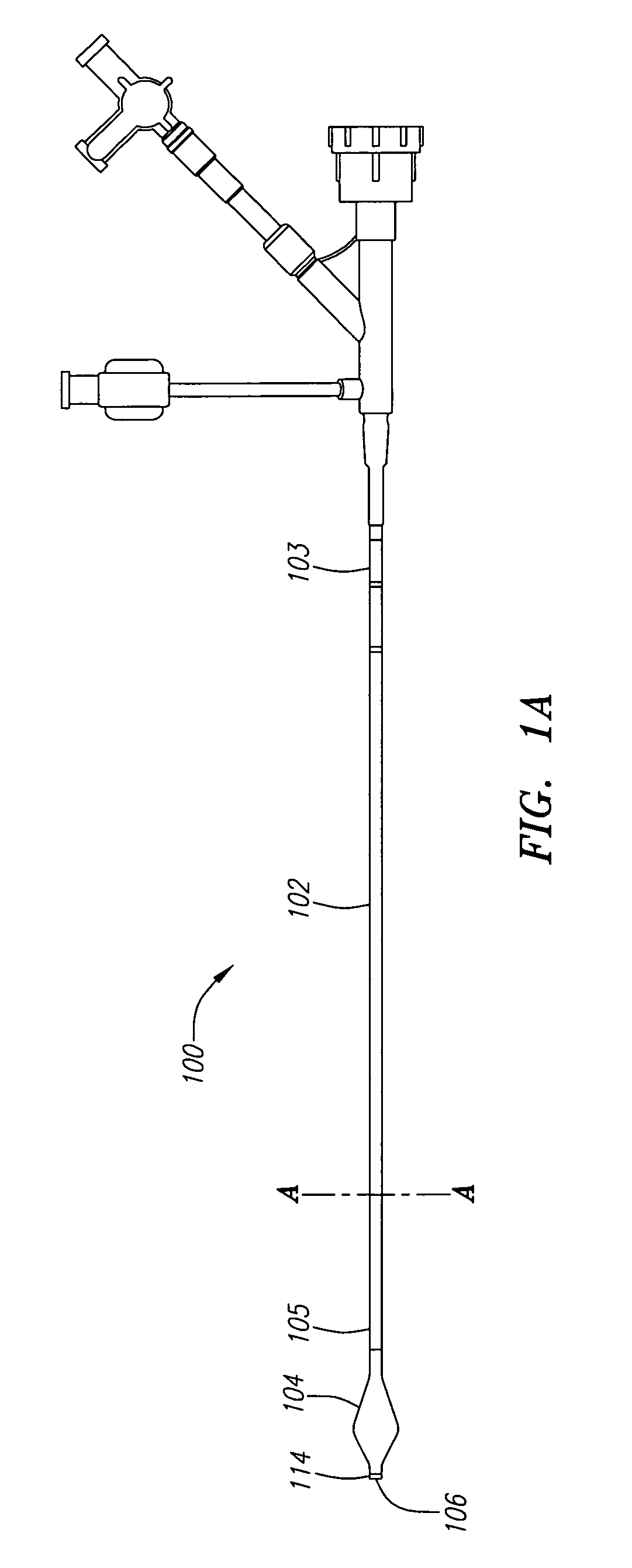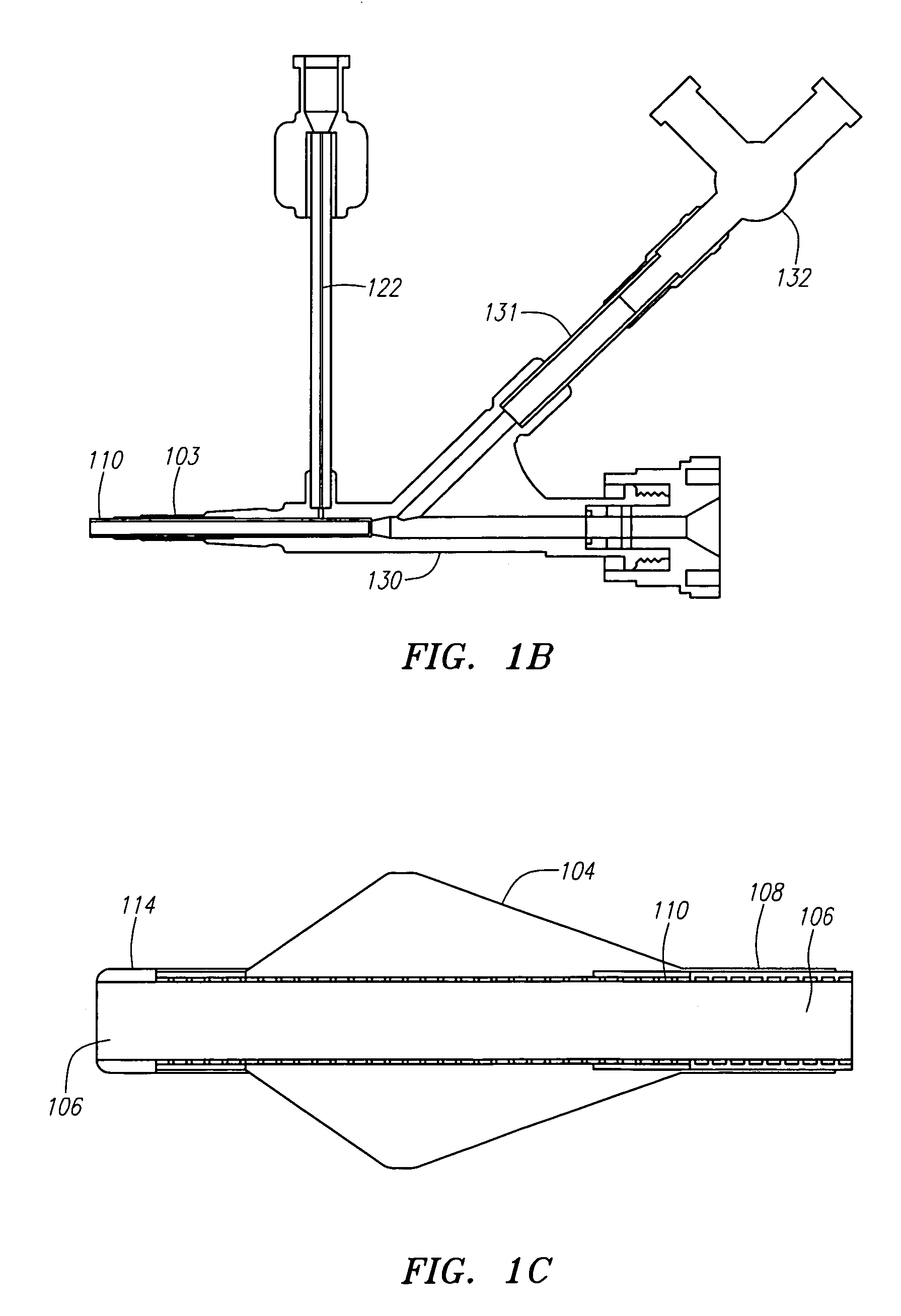Embolic protection device and methods of use
a protection device and a technology of a protective device, applied in the field of embolism protection devices and methods of use, can solve the problems of blockages, whether partial or full, that can have serious medical consequences, damage to the heart, and other vessels are also prone to narrowing
- Summary
- Abstract
- Description
- Claims
- Application Information
AI Technical Summary
Benefits of technology
Problems solved by technology
Method used
Image
Examples
Embodiment Construction
[0048]The present invention provides a system and method for evacuating emboli, particulate matter and other debris from a blood vessel, and particularly from an occluded blood vessel. As used herein, an “occlusion,”“blockage,” or “stenosis” refers to both complete and partial blockages of the vessels, stenoses, emboli, thrombi, plaque, debris and any other particulate matter which at least partially occludes the lumen of the blood vessel.
[0049]This method and apparatus are particularly suited to be used in diseased blood vessels that have particularly fragile lesions, or vessels whereby the consequences of even small numbers of small emboli may be clinically significant. Such blood vessels include diseased SVGs, carotid arteries, coronary arteries with thrombus such as associated with AMI, and renal arteries. However, it is contemplated that the method and apparatus may also be applied to peripheral, neuro, and other vascular and non-vascular applications.
[0050]FIG. 1A illustrates ...
PUM
 Login to View More
Login to View More Abstract
Description
Claims
Application Information
 Login to View More
Login to View More - R&D
- Intellectual Property
- Life Sciences
- Materials
- Tech Scout
- Unparalleled Data Quality
- Higher Quality Content
- 60% Fewer Hallucinations
Browse by: Latest US Patents, China's latest patents, Technical Efficacy Thesaurus, Application Domain, Technology Topic, Popular Technical Reports.
© 2025 PatSnap. All rights reserved.Legal|Privacy policy|Modern Slavery Act Transparency Statement|Sitemap|About US| Contact US: help@patsnap.com



